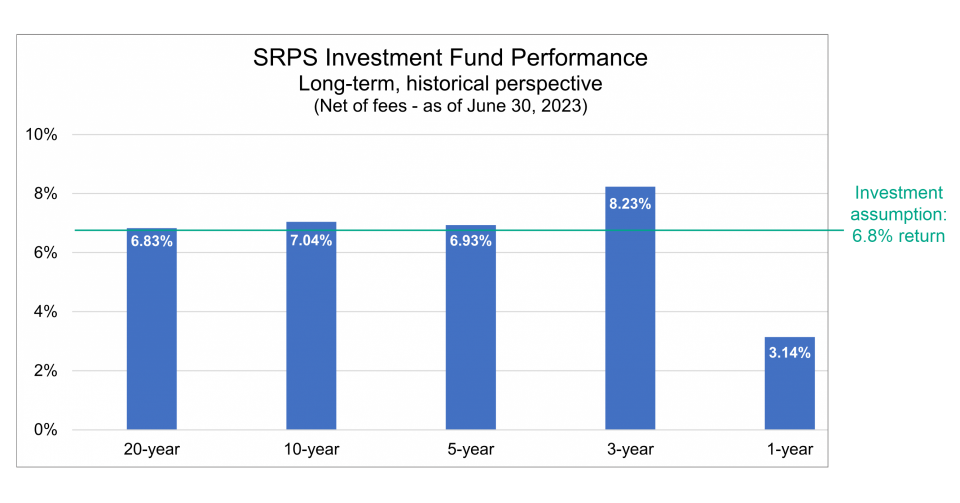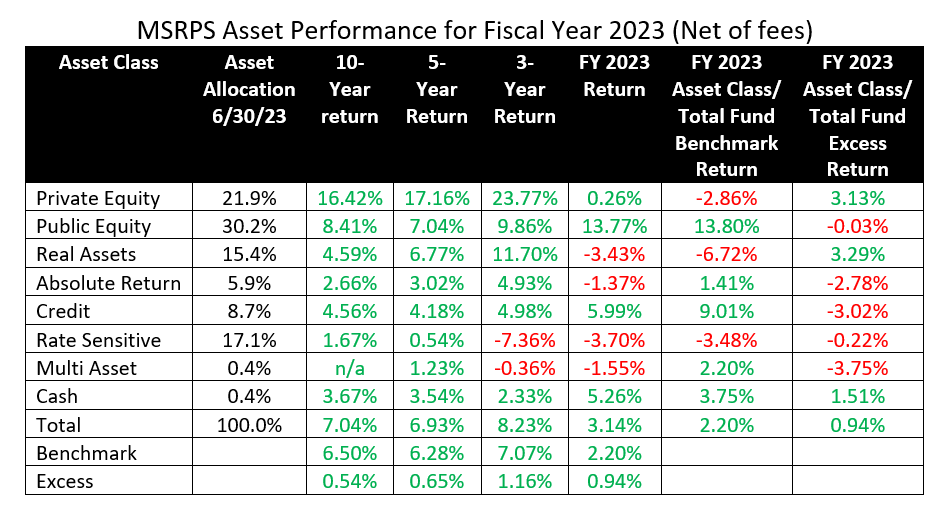State Retirement and Pension System ends volatile fiscal year with 3.14% return
Baltimore, MD (August 15, 2023) — The Board of Trustees of the Maryland State Retirement and Pension System (MSRPS) confirmed today that the System generated a return of 3.14%, net of fees, for the fiscal year ending June 30, 2023, beating its policy benchmark of 2.20%. The fund’s performance raised the System’s assets to $65.2 billion, an increase of nearly $600 million over the prior fiscal year. The System’s diversified and risk-balanced asset allocation is designed to reduce the probability of large market losses while producing the targeted long-term returns.
The fiscal year 2023 returns reflect a number of notable market factors: rising interest rates reflecting persistent inflation and a resilient real economy, higher U.S. stock prices despite higher interest rates and pressures on the banking system, weak emerging market stock relative performance reflecting a slower than expected post pandemic recovery in China and the time delay for private market investments to reflect public market valuation changes.
“The Board has adopted a diversified asset allocation that has achieved the long-term return targets with as little volatility as possible,” said Andrew C. Palmer, Chief Investment Officer. “The allocation includes a mix of assets that behave differently as markets ebb and flow to reduce volatility in any one period. Over the longer term, the fund returns of 8.23%, 6.93% and 7.04% for 3, 5 and 10 years, respectively, exceed the 6.8% actuarial target and have been achieved with relatively low volatility, which has contributed to the strong performance relative to the policy benchmark.”
“The Board’s diversified and risk-balanced asset allocation, enhanced by staff’s implementation, has achieved its performance objectives over the long-term with less risk than more traditional approaches,” said State Treasurer Dereck E. Davis, Chair of the Maryland State Retirement and Pension System Board of Trustees. “While financial markets have been volatile over the last two years and returns have been challenged, the System has added value for its participants and beneficiaries relative to 60/40 strategies.”
“It’s important to emphasize that we are long-term investors who need to balance the liquidity requirements to meet current benefit payments with the objective of generating returns for future benefit payments over an investment horizon that stretches across decades,” said Treasurer Davis. “Over the last ten years, investment returns have averaged 7%, exceeding the plan’s expected rate of return and consistent with the Board’s investment policy.”


